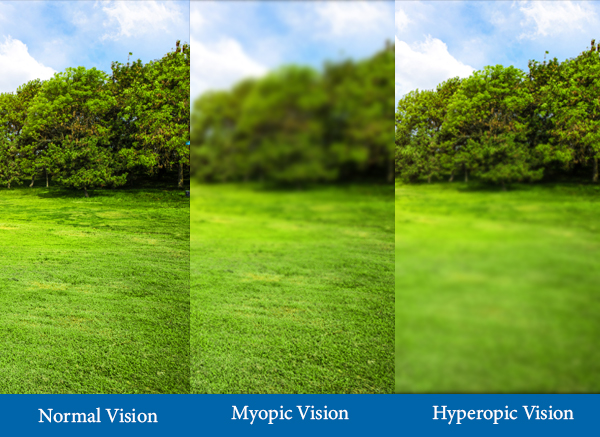Ever wondered why some people need glasses while others don’t? It all boils down to refractive errors. These are the reasons your vision might be unclear. Refractive errors occur when the shape of your eye doesn’t bend light correctly. This can result in blurred vision.
Your eye has parts like the cornea and lens which help focus light directly onto the retina. If these parts don’t work perfectly, images can be blurry. That’s what happens in refractive errors.
There are four main types:
- Myopia (nearsightedness): Close things look clear, but far away ones do not.
- Hyperopia (farsightedness): Far-off objects are clear, but close ones can be blurry.
- Astigmatism: Both near and far objects may appear blurry or distorted.
- Presbyopia: Common in middle-aged adults, this type makes it hard to see things up close.
Essential Symptoms You Shouldn’t Ignore
How can you tell if you have a refractive error? Watch for signs like:
- Blurry vision at varying distances
- Squinting your eyes often
- Frequently getting headaches
- Feeling strain or discomfort in your eyes
These symptoms won’t just make you uncomfortable; they can also affect daily activities. Kids might struggle with school if they can’t see what’s on the board. Ignoring these signs can risk eye health long-term.
Noticing these symptoms? It may be time to consult a professional to learn if a refractive error is the cause.
Importance of Early Diagnosis and Regular Eye Check-ups
Spotting refractive errors early is a big deal. If caught soon, managing these eye issues becomes more straightforward.

Why choose regular eye exams? They help doctors find not just refractive errors, but other potential eye problems too. Just like annual physicals, eye check-ups should be part of your health routine. They’re simple steps towards thriving eyesight.
Demystifying Common Myths About Refractive Errors
Is needing glasses embarrassing? Many think so, but it doesn’t have to be! Let’s bust a few myths:
- “Glasses will make my vision worse.” Glasses help, they don’t hinder. They correct how you see without altering your eye’s natural state.
- “Surgery is always necessary.” Not true. Surgery is an option, but glasses and contacts work well for many.
- “Refractive errors” are unfixable. In reality, they’re simple to treat with the right guidance.
Professional diagnosis matters. It’s about ensuring you get the best and safest advice.
Advanced Technologies and Treatments at Sree Krishna Healthcare
At Sree Krishna Healthcare state-of-the-art technology is used to manage and treat refractive errors.
- They use innovative tools for accurate diagnoses.
- Their treatment options are tailored to personal needs.
- Safety and effectiveness are a top priority, ensuring peace of mind.
Patients can confidently step into Sree Krishna Healthcare, knowing they’ll get the best in modern eye care.
Role of Genetics and Lifestyle in Refractive Errors
Genes play a part in refractive errors. If your family has a history of needing glasses, you might too.
But lifestyle also affects eye health. Spending a lot of time staring at screens? Poor lighting? These can stress eyes.
Here’s what you can do:
- Minimize screen time
- Use proper lighting
- Balance work with eye breaks
Simple habits can save you a lot of trouble.
Steps to Prevent or Manage Refractive Errors
Keeping your eyes healthy can be straightforward:
- Regular screen breaks: Every 20 minutes, take a break.
- Proper lighting: Ensure sufficient lighting when reading or using screens.
- Sunglasses: Protect your eyes from harmful UV rays.
Seek professional help when symptoms arise. Addressing refractive errors early can make all the difference.

